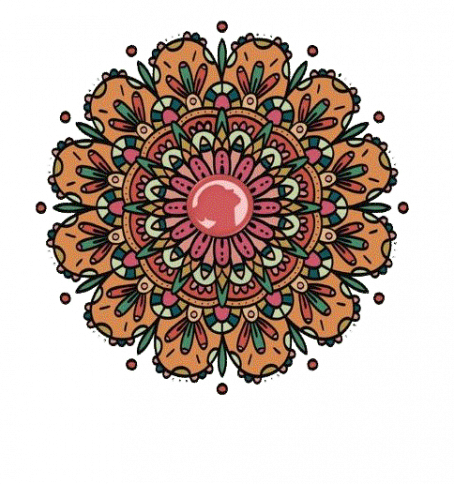Vijñāna Yoga
The four main practices of Vijñāna Yoga are the: the Seven Vital Principles, “Just Sitting”, Pranayama with attention to the 10 vayus and the study of yogic texts.
The name itself explains the flavour of practice and its guiding principles. It is a practice of deeper understanding.
We try to reestablish the balance that was lost between heaven and earth.
By practicing and applying the principles, we sharpen our awareness of heaven, earth and the space around us. Being conscious of bearing our weight und utilizing gravity prevents damage and enables quiet posture and little movement.
The Seven Vital Principles
In order to deepen our understanding of the Vital principles we need to choose one that attracts us most and work with it constantly until it is mastered.
It is only when all the principles coexist simultaneously that the practice is whole.

Relaxing the Body
In the beginning,relax the body. Inhale, and with the exhalation release tension.Inhale, and with the following exhalation scan the body from top to bottom and from bottom upwards. Wherever there is a gripping or tension – RELAX.The mind is looking at the body with a parental eye. Let excess leave the body- relax.In this way the body becomes stable and quiet.

Quieting the Mind
When we position ourselves on the mat we distance ourselves form our responsibility to react to the world.The eyes look inward to catch the inner mood, the state of mind.We observe ourselves and our practice from an inner silence. With each inhalation we sink deeper into the back of the head. With each exhalation there is an intensification of concentration.Empty mind intensifies itself in practice,

Intent
Now the body is stable, quiet and concentrated. From this place we see our objective – Sitting, Pranayama, Asana, and direct ourselves towards it. The mind directs itself to the practice; the body awaits the practice, the heart embraces the practice with all its might. By visualizing ourselves sitting, breathing,, moving, we devote ourselves wholly to it. With each breath, with each pose, we reaffirm our intent.
Rooting
The mind rests at the place where the body touches the earth. Let the weight of the body sink into this place for example the feet. As the roots of a tree deepen and widen into the earth, so the branches above expand into the sky. It is easy to understand the idea behind rooting, yet surprisingly difficult to execute it i every movement and posture. As rooting is masteed, the body becomes light and loose and moves without effort.
Connecting
Always be conscious of two opposite directions that are connected to each other. To go up, go down.To go forwards, shift into the back. Wishing for the left side, steady yourself on the right. Wishing to expand, come from the core.In each pose the farthest limb from the ground connects to that which is rooting into the ground.Every single body part in between is whole in itself, a distinct, functioning unit. All the parts are balanced and work together in harmony.The body ,in any situation, moves in oneness.

Breathing
Be aware of inhaling and exhaling. Inhale – go deep within; exhale- connect to the world. While inhaling the body elongates and widens; while exhaling, it steadies itself in rooting and connecting. Inhale and connect, exhale move into the final pose. At times the breath is sweet and soft; at times, it is dee and long. Sometimes the exhalation lasts longer than the inhalation; sometimes it is short and decisive. At times it is only on the background; breath is always present.
Expanding- Elongating & Widening
When there is rooting while exhaling, inhaling brings about elongation and widening. Or elongation and widening that occur as a result of rooting, allow for inhalation. There is no sagging into the joints, no effort in the muscles.VAYU´s GATE - The Ten Vital Winds
A little-known yet vital yogic practice is known as the ten vayus. Why they were forgotten is a mystery, but they stand for a living link between the physical and energy body and thus are vital in any serious yoga practice.
The 5 Outer Vayus relate to:
Naga – belching, vomiting
Kurma – widening the eyes
Krikara – widening the nostris (sneezing)
Devadatta – opening the throat (yawning)
Dhananjaya – elongating the whole body
The Outer Vayus are about contracting and dilating. They initiate a much needed relaxation that (a lot of times) we can not access otherwise.
They are identified as an initial opening, widening, and inhaling while their resulting and complementary movement is experienced as released and expelling returning to a neutral state. After practice one feels relaxed, free of tension and more awake.
The 5 Inner Vayus relate to:
Prana – heart
Apana – anus
Samana – navel
Udana – throat
Vyana – skin
This practice can be seen as a fine tuning of alignment through breath.
You begin to breathe into these specific areas and then exhale. Focussing on specific place in the body while breathing consciously.
It is a basic practice centered on a precise physical sport in a direct, unmediated manner, unencumbered by any mantra visualization, or assumption.
Its essence is the discovery and enhancement of a particular physiological point in the body through concentration and breath.
Study of Yogic texts
The study of Yoga is an excellent way of disciplining the mind and of deepening one´s
self – knowledge. It is not an accident that many yogic schools insist that the student is asked to enrich his or her spiritual life through careful study of the sacred scriptures.
The Yoga Sutras of Patañjali for example offer a wisdom of centuries of spiritual experimentation and allow one to inspire one´s personal practice and path of Yoga.


